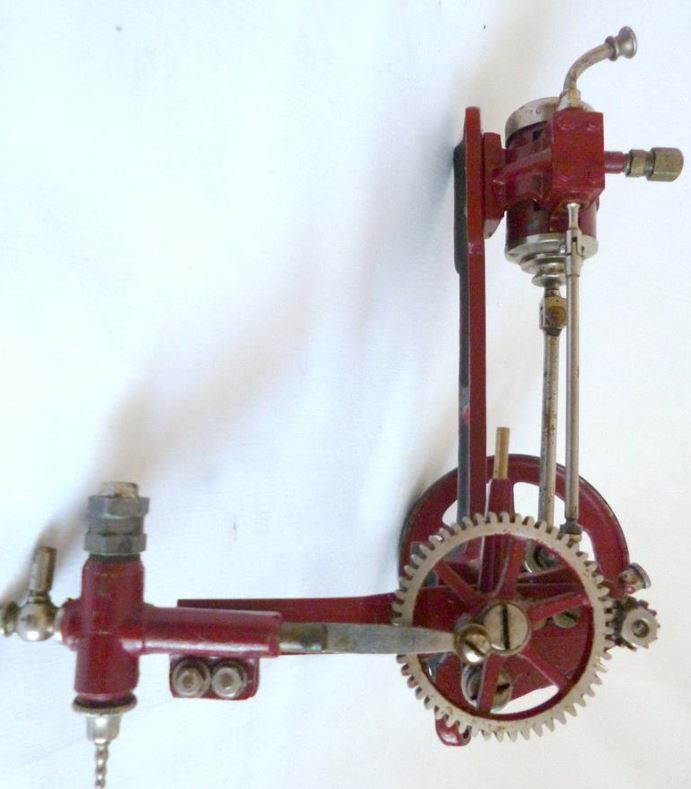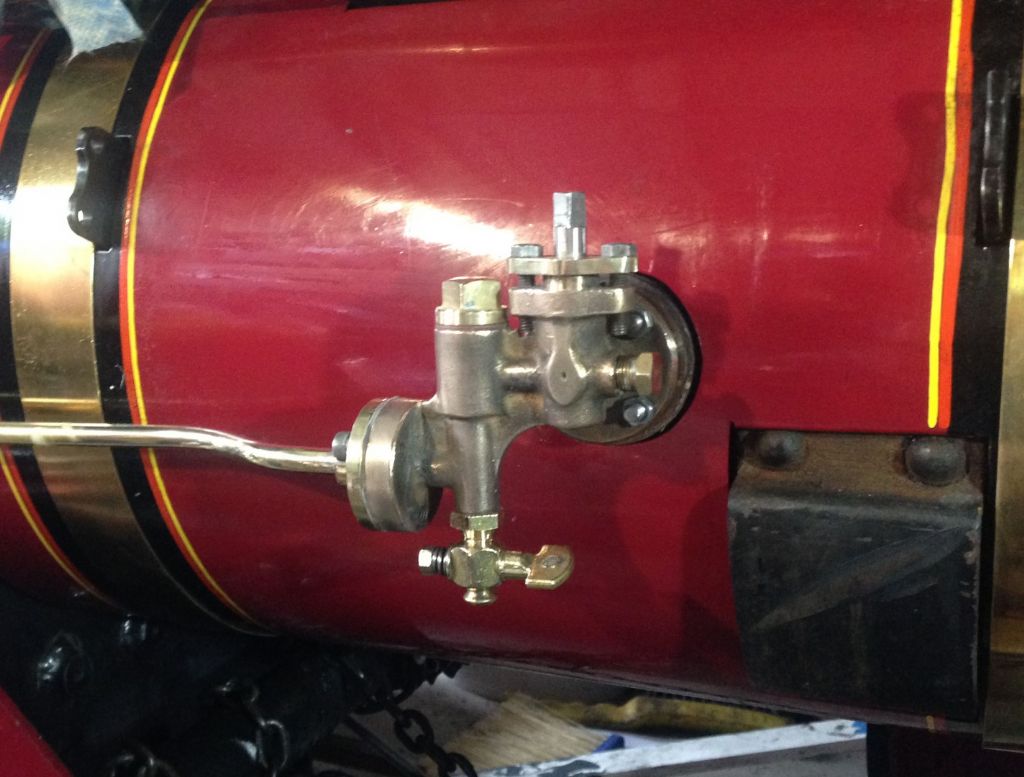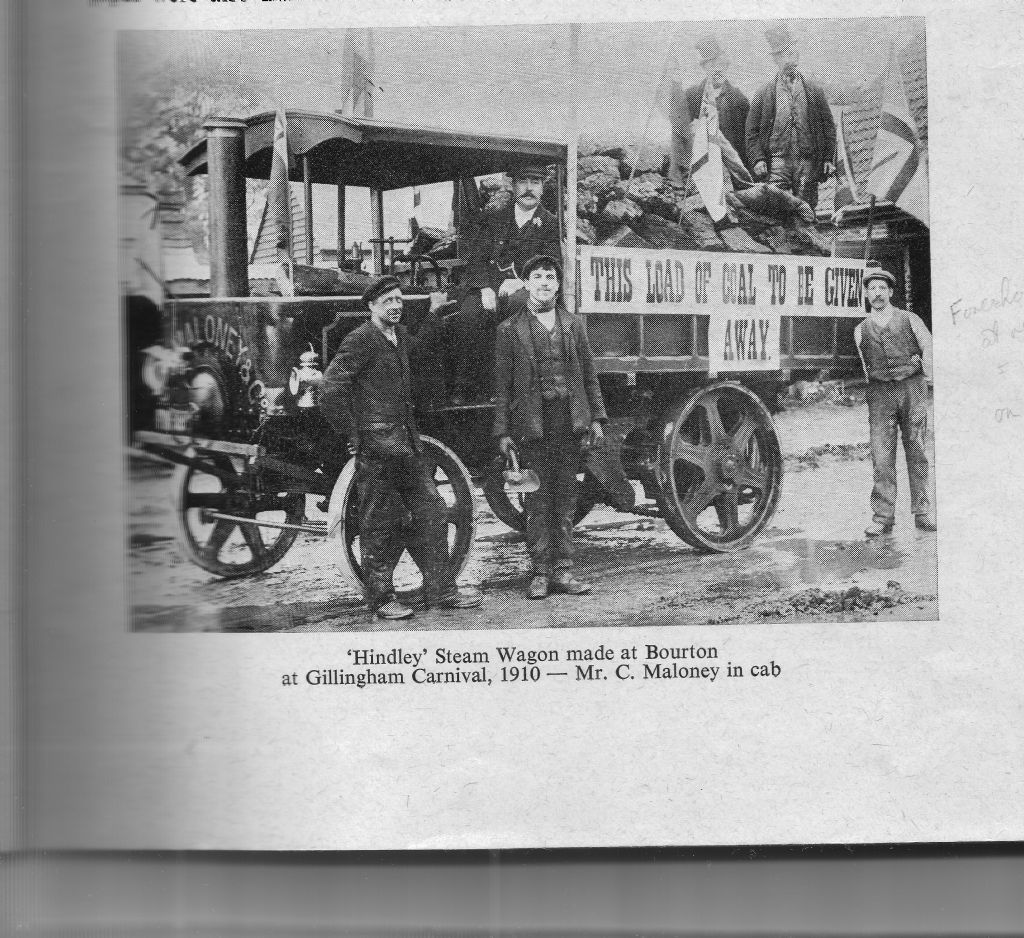Squirting someone would seem a certain way to know the pump is working! 
Hidden on that historical photo, the tank is tucked away behind the rear axle. I have given my model a hand-pump in the tank, and its handle needs a large slot with coaming in the lid. As this needs be readily accessible from the driving platform, the sensible, and simple, approach is place the bypass outlet visibly just below the rim of the slot, as on many miniature locomotive tenders.
.
Charles Maloney's businesses were evidently successful and perhaps he liked to treat his employees well, for all the Hindley publicity suggests the canopy was an optional extra I am copying. Bling too, as few if any other photographed examples show a polished capuchon: I have replicated the standard chimney's half-round beading, all painted. The side-lamps are Hindley standard, but that big headlamp on a crude wooden frame looks like an owner's modification.
.
(I have built a plain, flat-bed platform for static display. Held by 6 M6 coach bolts that are not too intrusive or unlikely, it is reasonably realistic with separate planks on a wooden frame. I gauged likely plank and frame sizes from examining preserved and modern goods vehicles, and dividing by three.
I painted it, but later realised it would look better if I removed the paint on the floor area and replaced it with timber preservative. A coarse sanding-disc left shallow arcs, which l kept, so that the treated floor resembles the circular-sawn, creosoted planks likely to have been fitted to the originals built >100 years ago.
The frame and head-board stay painted, as appears common on preserved full-size lorries)
Nigel Graham 2.








